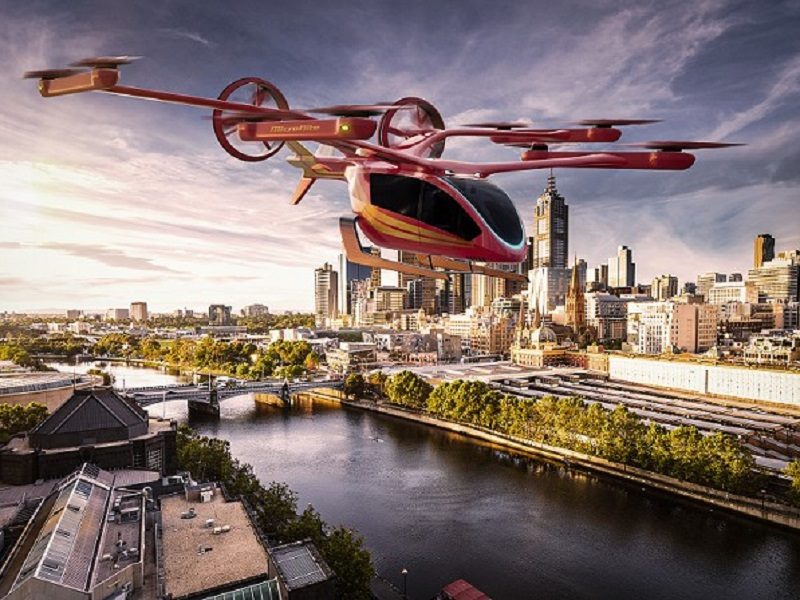Global Avionics Round-Up from Aircraft Value News (AVN)

(Photo: Eve Air Mobility)
Once a speculative concept reserved for futurists, Advanced Air Mobility (AAM) is now rapidly emerging as a practical reality, thanks largely to revolutionary developments in avionics.
From electric vertical takeoff and landing (eVTOL) aircraft to highly automated flight control systems, avionics is the nerve center of this next-generation ecosystem, orchestrating the delicate balance of safety, autonomy, and sustainability.
AAM seeks to redefine how people and goods move across urban and regional landscapes. Instead of being confined to traditional runways or existing air corridors, new aircraft designs such as eVTOLs are built to operate flexibly within dense environments.
These vehicles are only as good as the technology that guides them, and that’s where avionics takes center stage. The success of AAM depends on avionics systems that are more advanced, compact, and digitally integrated than anything seen in conventional aircraft.
One of the most dramatic shifts is the move toward Fly-by-Wire systems tailored for short-range electric aircraft. Traditional control yokes and mechanical linkages are giving way to touchscreen interfaces, gesture-based inputs, and artificial intelligence-assisted decision-making.
Pilots are optional…
In AAM cockpits, pilots, when they are even present, are less burdened with manual control and more engaged with supervisory roles over highly automated systems. These avionics packages integrate real-time weather data, obstacle detection, airspace traffic coordination, and power management into seamless displays that can be interpreted at a glance.
Equally transformative is the integration of vehicle-to-infrastructure (V2I) and vehicle-to-vehicle (V2V) communication protocols. These avionics features are vital in urban skies, where dozens of aircraft could be flying in close proximity.
The avionics systems must constantly update positioning, speed, trajectory, and potential hazards, relaying data to both centralized traffic management systems and neighboring aircraft. This real-time coordination mimics the air traffic control of today, but at a level of speed and granularity that only digital automation can handle.
The FAA and other regulatory bodies are now faced with the challenge of certifying these new systems for widespread use. That means avionics must meet stringent reliability standards while proving they can operate safely in a complex, mixed-use airspace.
To support this goal, developers are leaning on virtual testing environments powered by AI, machine learning, and digital twins. These simulation platforms allow avionics engineers to stress-test their systems against thousands of variables before the aircraft ever takes flight.
Power management and battery monitoring are also becoming core avionics functions in the AAM world. Unlike jet engines that run on kerosene, eVTOLs rely on high-density batteries that require constant oversight to optimize performance and avoid overheating.
Smart avionics must calculate optimal energy usage for the flight route, weather conditions, payload, and emergency contingencies, often making real-time adjustments mid-flight. This kind of intelligent systems management would be impossible without cutting-edge avionics architecture.
Even the role of pilots is being reimagined. In many future AAM scenarios, pilots may not be needed at all. Avionics development is pushing toward full autonomy, where flights are managed by artificial intelligence systems capable of navigating from takeoff to landing without human input.
Early tests have shown promise, but full autonomy requires an unprecedented level of avionics precision, redundancy, and situational awareness. Companies like Honeywell, Garmin, and Thales are now racing to develop avionics suites that meet these ambitious targets.
The implications stretch far beyond mere convenience. By enabling short-range, electric, and eventually autonomous flights, advanced avionics can help alleviate urban congestion, reduce carbon emissions, and expand access to transportation in underserved communities.
A commuter in Los Angeles, for instance, could one day bypass clogged freeways with a ten-minute AAM flight across town, all guided by a sleek avionics system barely larger than a shoebox but exponentially more powerful than today’s commercial jet cockpits.
Advanced Air Mobility is no longer the stuff of science fiction. It is a fast-approaching aviation reality that hinges on how well avionics can adapt to a new paradigm of flight.
From smart energy use and digital ATC coordination to autonomy and human-machine interaction, the future of urban air travel is being written not just in carbon fiber and batteries, but in the code and circuits of a radically reimagined avionics core.
This article originally appeared in our partner publication, Aircraft Value News.
John Persinos is the editor-in-chief of Aircraft Value News.